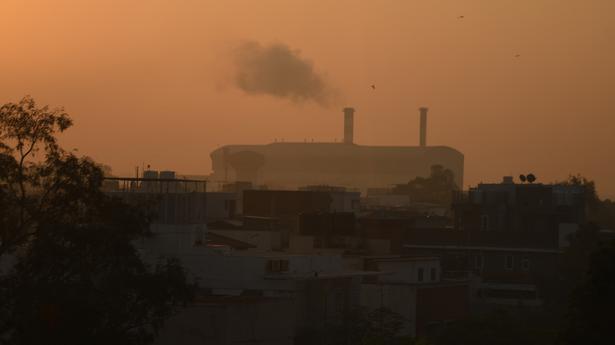
Delhi’s PM2.5 levels worst in the world
The Hindu
Kolkata placed second; study says Indian cities see high PM emissions, but low NO2 emissions
A global analysis of air quality found that Indian cities, while recording particulate matter emissions (PM2.5) that are among the highest in the world, do relatively better on nitrogen dioxide (NO 2) emissions.
The report, Air Quality and Health in Cities, released by US-based Health Effects Institute on Wednesday, analyses pollution and global health effects for more than 7,000 cities around the world, focusing on two of the most harmful pollutants - fine particulate matter (PM2.5) and nitrogen dioxide (NO 2).
The report, using data from 2010 to 2019, found that global patterns for exposures to the two key air pollutants were “strikingly different.” While exposures to PM2.5 pollution tend to be higher in cities located in low- and middle-income countries, exposure to NO 2 is high across cities in high-income as well as low- and middle-income countries.
Delhi and Kolkata were ranked first and second in the list of top 10 most polluted cities when PM2.5 levels were compared, with Delhi and Kolkata reporting an average annual exposure of (relative to population) of 110 µg/m3 and 84 µg/m3 respectively. µg/m3 refers to microgram per cubic metre.
However no Indian city appeared in the list of top 10 – or even top 20 - polluted cities when N0 2 levels were compared. This list saw Shanghai at the top with an average annual exposure of 41 µg/m3. Average NO 2 levels for Delhi, Kolkata and Mumbai, according to the report, ranged from 20-30 µg/m3.
NO 2 comes mainly from the burning of fuels in older vehicles, power plants, industrial facilities and residential cooking and heating. As city residents tend to live closer to busy roads with dense traffic, they are often exposed to higher NO 2 pollution than residents of rural areas.
In 2019, 86% of the more than 7,000 cities analysed in the report exceeded the WHO’s 10 µg/m3 guideline for NO 2, impacting about 2.6 billion people. “While PM2.5 pollution tends to get more attention on known hotspots around the world, less data has been available for NO 2 at this global scale,” the report notes.











